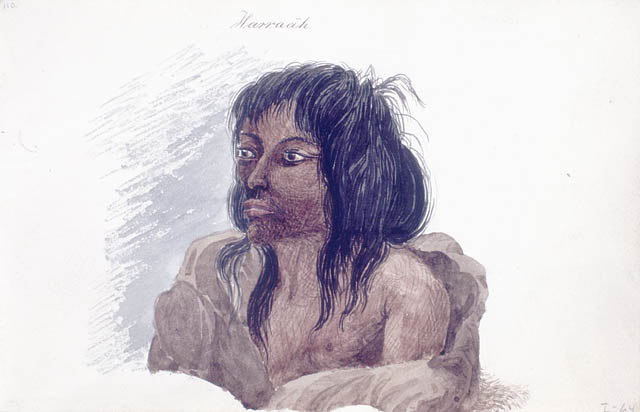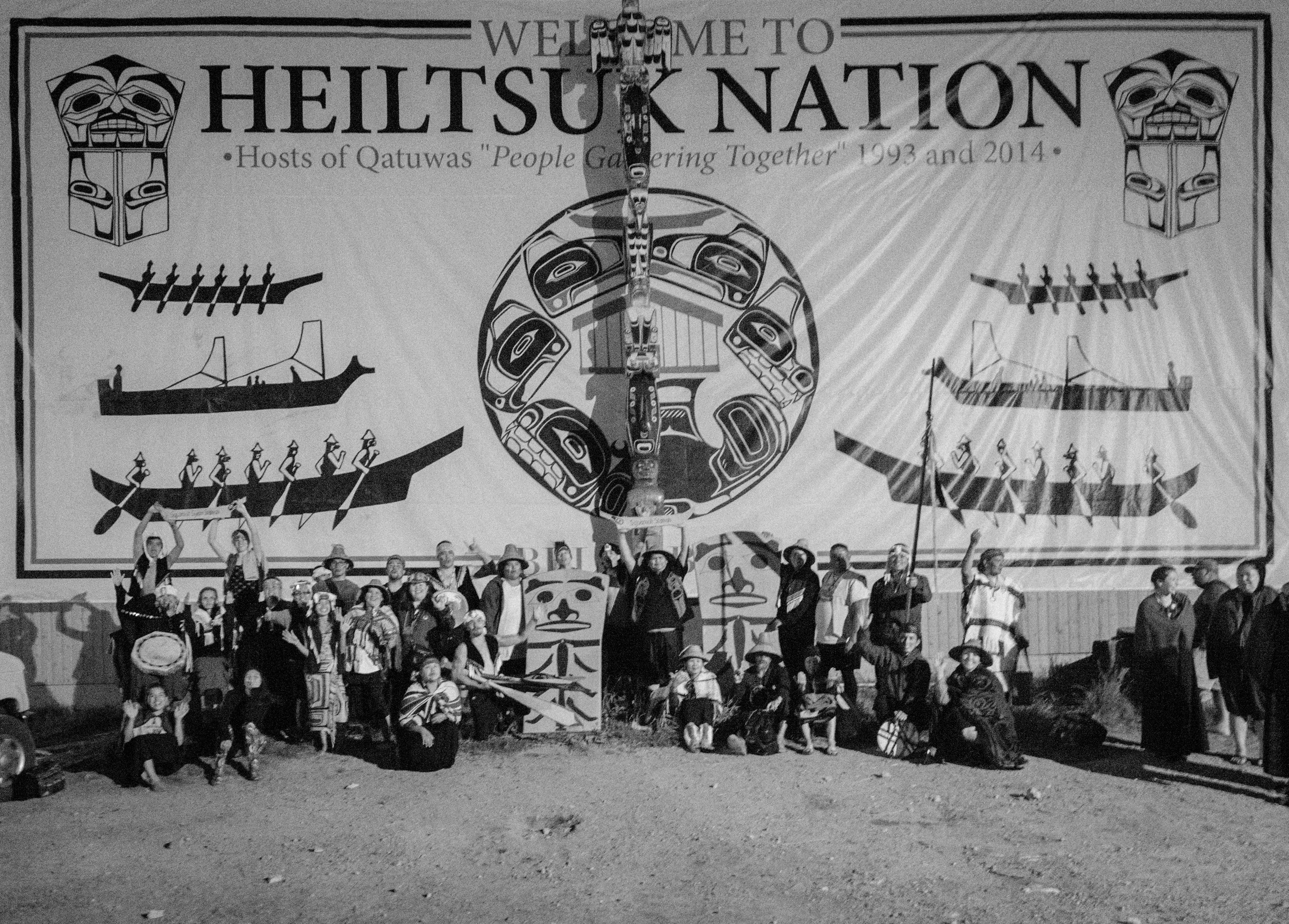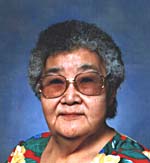Browse "Communities & Sociology"
-
Article
Dinjii Zhuh (Gwich'in)
Dinjii Zhuh (also Gwich’in, formerly Kutchin), meaning “one who dwells (in)” or “the inhabitant of,” are Dene (Athabaskan)-speaking Indigenous peoples who live in northwestern North America. These communities are often referred to collectively as Dinjii Zhuh, although some First Nations and the Gwich’in Tribal Council retain the Gwich’in name. The estimated population of the 15 Dinjii Zhuh communities in the Northwest Territories, Yukon and Alaska is between 6,000 and 9,000 people. In the 2021 census, 3,170 people claimed to be of Gwich’in ancestry.
"https://d2ttikhf7xbzbs.cloudfront.net/media/media/850202e1-ea95-4b88-83fb-b126572b0791.jpg" // resources/views/front/categories/view.blade.php
https://d2ttikhf7xbzbs.cloudfront.net/media/media/850202e1-ea95-4b88-83fb-b126572b0791.jpg
-
Article
Haisla (Kitamaat)
The Haisla are a First Nation in Canada. The Haisla Nation is made up of two historic bands, the Kitamaat of upper Douglas Channel and Devastation Channel and the Kitlope of upper Princess Royal Channel and Gardner Canal in British Columbia. The Kitamaat call themselves Haisla ("dwellers downriver"); and the Kitlope, Henaaksiala ("dying off slowly"), a reference to their traditional longevity. The official designations Kitamaat ("people of the snow") and Kitlope ("people of the rocks") were adopted from the names used by the Tsimshian to refer to their Haisla neighbours.
"https://d2ttikhf7xbzbs.cloudfront.net/haisla.jpg" // resources/views/front/categories/view.blade.php
https://d2ttikhf7xbzbs.cloudfront.net/haisla.jpg
-
Article
Tr'ondëk Hwëch'in (Han)
Han territory traditionally straddled the Yukon-Alaska boundary, extending along the Yukon River from about 20 km south of Dawson northward to about 50 km south of Circle, Alaska.
"https://d2ttikhf7xbzbs.cloudfront.net/media/media/7d2699bc-260f-4b3e-b27a-f0d430e23030.jpg" // resources/views/front/categories/view.blade.php
https://d2ttikhf7xbzbs.cloudfront.net/media/media/7d2699bc-260f-4b3e-b27a-f0d430e23030.jpg
-
Article
Handsome Lake Religion
The Handsome Lake Religion is a religion practised by some Haudenosaunee communities in Canada and the US. Its members are known as "the Longhouse people" because ceremonies are held in a longhouse. Its beliefs and practices are a blend of Indigenous traditions and innovations introduced by the Seneca prophet Handsome Lake who preached from 1799 until his death in 1815.
"https://development.thecanadianencyclopedia.ca/images/tce_placeholder.jpg?v=e9dca980c9bdb3aa11e832e7ea94f5d9" // resources/views/front/categories/view.blade.php
https://development.thecanadianencyclopedia.ca/images/tce_placeholder.jpg?v=e9dca980c9bdb3aa11e832e7ea94f5d9
-
Article
Hannah Maria Norris
Hannah Maria Norris, Baptist missionary (b at Canso, NS 30 Nov 1842; d at Toronto 14 Sept 1919). Though baptized a Congregationalist as a child, Norris was raised in a strong Baptist community and eventually received adult baptism in that church.
"https://development.thecanadianencyclopedia.ca/images/tce_placeholder.jpg?v=e9dca980c9bdb3aa11e832e7ea94f5d9" // resources/views/front/categories/view.blade.php
https://development.thecanadianencyclopedia.ca/images/tce_placeholder.jpg?v=e9dca980c9bdb3aa11e832e7ea94f5d9
-
Article
K'asho Got'ine (Hare)
K’asho Got’ine are Dene traditionally occupying territory along the lower Mackenzie River valley of the Northwest Territories. Fort Good Hope and Déline (Fort Franklin) are now the major population centres of the K'asho Got'ine.
"https://d2ttikhf7xbzbs.cloudfront.net/media/media/7d34c6c1-db64-4b7f-81cd-4ec1f0e07b84.jpg" // resources/views/front/categories/view.blade.php
https://d2ttikhf7xbzbs.cloudfront.net/media/media/7d34c6c1-db64-4b7f-81cd-4ec1f0e07b84.jpg
-
Article
Harold Cardinal
Harold Cardinal, Cree chief, lawyer, author (born on 27 January 1945 in High Prairie, AB; died on 3 June 2005 in Edmonton, AB). An Indigenous rights activist, Cardinal was a leader in the movement against the 1969 White Paper, which sought to do away with Indian Status and treaty rights. Cardinal was actively involved in Indigenous politics for much of his life and is remembered as a strong and inspirational leader.
"https://d2ttikhf7xbzbs.cloudfront.net/media/media/e9e4a925-a033-404d-9819-a3bb46fe9c8e.jpg" // resources/views/front/categories/view.blade.php
https://d2ttikhf7xbzbs.cloudfront.net/media/media/e9e4a925-a033-404d-9819-a3bb46fe9c8e.jpg
-
Article
Harold Spence-Sales
Harold Spence-Sales, urban planner (born 22 October 1907 in Lahore, India; died 12 March 2004 in Montréal, QC).
"https://development.thecanadianencyclopedia.ca/images/tce_placeholder.jpg?v=e9dca980c9bdb3aa11e832e7ea94f5d9" // resources/views/front/categories/view.blade.php
https://development.thecanadianencyclopedia.ca/images/tce_placeholder.jpg?v=e9dca980c9bdb3aa11e832e7ea94f5d9
-
Article
Hebron Mission National Historic Site of Canada
For generations, Hebron, one of Nunatsiavut’s (see Labrador Inuit and Newfoundland and Labrador) most culturally important and significant sites, was an important meeting place for the Inuit, as well as a primary hunting and fishing area. In the early 1800s, Moravian missionaries chose the site to establish their fourth and northernmost mission in Labrador, officially opening the mission in 1830 (although missions were later established farther north, at Ramah in 1871 and Killinek in 1905). For more than 130 years, Hebron was a thriving community where an average of 200 to 250 Inuit lived. In 1959, without consultation with the Inuit, the community was closed, forcing all Inuit to relocate. Declared a National Historic Site in 1976 by the federal government, the Hebron Mission has been undergoing major restoration since 2004.
"https://d2ttikhf7xbzbs.cloudfront.net/media/new_article_images/HebronMissionNationalHistoricSiteofCanada/Hebron_Mission_1901_photo.png" // resources/views/front/categories/view.blade.php
https://d2ttikhf7xbzbs.cloudfront.net/media/new_article_images/HebronMissionNationalHistoricSiteofCanada/Hebron_Mission_1901_photo.png
-
Article
Heiltsuk (Bella Bella)
The Heiltsuk are an Indigenous people who have occupied a part of the central coast of British Columbia in the vicinity of Milbanke Sound and Fisher Channel. Historically, Europeans referred to the Heiltsuk as the Bella Bella, a term anglicized from the name of a site located near the present-day community of the same name. As of January 2025, the registered population of the Heiltsuk Nation was 2,532.
"https://d2ttikhf7xbzbs.cloudfront.net/media/media/87388b37-bcec-40b0-a9fc-ad9c720c065a.jpg" // resources/views/front/categories/view.blade.php
https://d2ttikhf7xbzbs.cloudfront.net/media/media/87388b37-bcec-40b0-a9fc-ad9c720c065a.jpg
-
Article
Helen Gregory MacGill
Helen Gregory MacGill, judge, journalist, musician (born 7 January 1864 in Hamilton, Canada West; died 27 February 1947 in Chicago, Illinois). Helen Gregory MacGill was a pioneering journalist, feminist and judge. She was the first woman to graduate from Trinity College (now the University of Toronto), as well as the first woman judge in British Columbia, where she served on the juvenile court for 23 years. Her daughter, Elsie MacGill, became the world’s first female aeronautical engineer and aircraft designer.
"https://d2ttikhf7xbzbs.cloudfront.net/media/media/8997be51-6630-42e3-85ff-0e5272e2eec9.jpg" // resources/views/front/categories/view.blade.php
https://d2ttikhf7xbzbs.cloudfront.net/media/media/8997be51-6630-42e3-85ff-0e5272e2eec9.jpg
-
Article
Helen (Ma) Armstrong
Helen (Ma) Armstrong (née Jury), labour activist, women’s rights activist (born 17 June 1875 in Toronto, Ontario; died 17 April 1947 in Los Angeles, California). Helen Armstrong was a labour activist who fought for the rights of working-class women throughout her life. She was the leader of the Winnipeg Women’s Labor League and a central figure in the 1919 Winnipeg General Strike. She campaigned for unions, a minimum wage and social security, and against conscription. Armstrong was arrested for her activism at least three times, including twice during the Winnipeg General Strike. Historian Esyllt Jones described Helen Armstrong as “the exception in a male-dominated labour movement.”
"https://d2ttikhf7xbzbs.cloudfront.net/media/new_article_images/HelenArmstrong/Helen_Armstrong_SIS_P7199_12-resize.jpg" // resources/views/front/categories/view.blade.php
https://d2ttikhf7xbzbs.cloudfront.net/media/new_article_images/HelenArmstrong/Helen_Armstrong_SIS_P7199_12-resize.jpg
-
Article
Helen Mamayaok Maksagak
Helen Mamayaok Maksagak, CM, politician, public servant, community leader (born 15 April 1931 in Bernard Harbour, NT [NU]; died 23 January 2009 in Cambridge Bay, NU). Maksagak was the first woman and Inuk to serve as the commissioner of the Northwest Territories. A vocal and engaged advocate for Inuit affairs, she contributed to efforts to establish Nunavut as Canada’s third territory in the 1990s. In March of 1999, she was chosen as the first commissioner of the newly created Nunavut territory; her term lasted until March 2000. Maksagak returned to a formal political role in November 2005, when she was appointed deputy commissioner of Nunavut. In addition to her political career, Maksagak performed advocacy work, focusing on Inuit and, more broadly, Indigenous initiatives, such as improving access to social services.
"https://d2ttikhf7xbzbs.cloudfront.net/media/media/4fc58d24-f4e6-464b-92bf-c9647246118f.jpg" // resources/views/front/categories/view.blade.php
https://d2ttikhf7xbzbs.cloudfront.net/media/media/4fc58d24-f4e6-464b-92bf-c9647246118f.jpg
-
Article
Hénoc Muamba
Hénoc Muamba, football player (born 23 February 1989 in Kinshasa, Congo). Defensive lineman Hénoc Muamba was named the best defensive player in Canadian university football in 2010. Selected first overall in the 2011 Canadian Football League (CFL) draft, Muamba has played for the Winnipeg Blue Bombers (2011–13), the Montreal Alouettes (2015, 2018–19), the Saskatchewan Roughriders (2016–17) and the Toronto Argonauts (2021–present). A two-time CFL All-Star and the 2019 Most Outstanding Canadian, Muamba was named both Most Valuable Canadian and Most Valuable Player at the 2022 Grey Cup. He is only the second player in CFL history (after Andrew Harris in 2019) to earn the double honour.
"https://d2ttikhf7xbzbs.cloudfront.net/2022-_10-_Henoc_Muamba_2.jpg" // resources/views/front/categories/view.blade.php
https://d2ttikhf7xbzbs.cloudfront.net/2022-_10-_Henoc_Muamba_2.jpg
-
Article
Henri Garrouteigt
(Jean-Joseph) Henri Garrouteigt. Gregorianist, b Paris 28 or 29 Oct 1875, d Montreal 28 Aug 1965. He joined the Sulpicians in 1893 in Issy and was ordained a priest in 1898 in Paris. He held a degree in philosophy and a doctorate in theology.
"https://development.thecanadianencyclopedia.ca/images/tce_placeholder.jpg?v=e9dca980c9bdb3aa11e832e7ea94f5d9" // resources/views/front/categories/view.blade.php
https://development.thecanadianencyclopedia.ca/images/tce_placeholder.jpg?v=e9dca980c9bdb3aa11e832e7ea94f5d9
